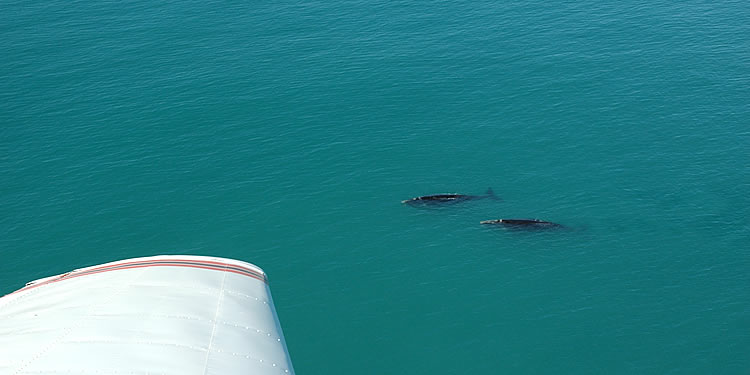The gestation period of a whale is 12 months. For an equivalent period, the female breast-feeds its calf, which is 5.5 meters long and weighs around 3 thousand kilograms when it is born.
The right whale reaches its sexual maturity at the age of 5 or 6. The females capable of breeding return to the Valdés Peninsula area every 3 years in search for safe quiet waters to bear only one calf.
The males, instead, return every year to court new females. The largest concentration of whales gathers at the Valdés Peninsula region from October to November. Experts on the matter have come to count about 500 whales of the same species.

This is the reason why the Argentinian shores are considered the most important breeding zone in the Southern hemisphere.
Migrations towards other destinations still unknown begin in December. The need for food (krill) makes the right whales wander around the Southern seas, including Antarctica.
In spite of technological advance, man still does not know where they are bound. In a world that is becoming more and more disenchanted, this contributes with a kind of poetry that keeps these beautiful beings alive, nothing more and nothing less

Whale mating represents a real phenomenon from all points of view. It is a sort of ritual fulfilled year after year in which a female and half a dozen males take part.
The female feels afraid and usually rolls onto her back to frustrate the advances of the males. When this happens, some of the males try to turn her back to her original position with their own bodies, for some of the other males in the group to succeed in gaining her favor.

During this strange courtship, which may sometimes take long hours, it is feasible that all the males may accomplish their aim. The animal world shows us that the laws of nature are very different from ours.


The upper jaw of a right whale shelters over two hundred baleen plates after which they have been named. As they feed, these plates filter the water to retain food, especially the very coveted krill.